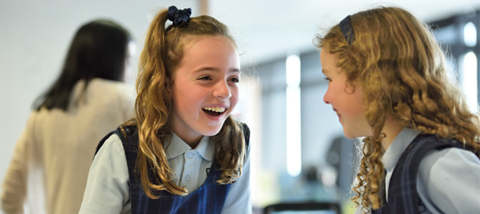
It’s almost that time again: the time when children and young people go back to school. And while many will think nothing of the start of a new academic year, there are some who will be anxious and uncertain about this new beginning. Many of these will be children or young people starting a new school.
The majority of children move to a new school in Year 6, although there are a handful of local authorities still using a three-tier system, which sees students moving at the start of Year 5 and again at the end of Year 8. Before it all happens, moving to a new school can be a scary prospect. There may be older students (most probably siblings…) putting about stories of heads being flushed down toilets, doing nothing to settle any nerves. So how can we help those we work with make the move with confidence and success?
Well first, we should focus on the positive. Most have no long-term issues making the move from primary to secondary school. There may be some initial uncertainty about which bus to catch, what PE kit to bring or where the science lab is, but that’s normal (remember the last time you started a new job?). If we frame our language positively, then we can build young people’s confidence and create positive expectations for them.
A new school brings the possibility of a completely new start. Young people don’t have to be the person they were at their old school. They can leave behind opinions others have of them and start afresh. This is particularly liberating for those who have struggled at their previous school and so have a ‘reputation’. We should help the 11-year-olds we work with see how they can escape those expected behaviours and turn over a new leaf.
If young people are worried about aspects of moving to secondary school, then we should help them form strategies that they can use if their worries do come to reality. Work with them to identify which teachers they can talk to if they’re struggling. This could be their form tutor, head of year or a member of the pastoral support staff. You could also make yourself or people in your church community available over these first weeks to help both young people and parents if there’s an issue. Remind them they don’t have to go through difficult situations on their own.
If the young people making this new start haven’t yet received anything like this, you could go through a resource such as It’s Your Move. This will give you a stimulus to discuss anything the young people are worried about, as well as include a faith element to your preparations. There are also plenty of newspaper articles around designed to help students to make the move, such as this one from the Guardian.
We can also act as hubs to help families access all the uniform, equipment and resources that a young person needs to go to secondary school. Many families will struggle to provide everything (the kit list from school can be a daunting prospect for everyone, regardless of whether you’re struggling to make ends meet), so facilitating second-hand sales, swaps or donations will take a load of the minds of families, and reduce the stress the young person might be feeling before they start.
Finally, the sad fact is that a few young people will struggle to make that move. So, be a listening ear for anyone with problems at school, work with the family and, if necessary, advocate for the young person in school. Staff want everyone to thrive in their new school, so will have strategies in place to help all young people do that, whatever their level of additional need.
Moving school can be a transformative life event for young people marking a new phase of life and a chance to meet new friends and try new things. Let’s be there to help them make the most of this exciting opportunity!






























